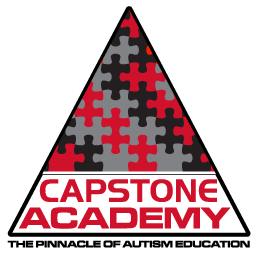What is Autism?
Autism is a complex neurobehavioral disorder that causes social, communication, and behavioral challenges. A diagnosis of an autism disorder includes several diagnoses that used to be categorized separately, including autistic disorder, pervasive developmental disorder-not otherwise specified, and Asperger syndrome.
Autism begins before age 3; however, many parents notice differences in development by the child's first birthday. Typically, a person with autism engages in some repetitive, ritualistic type behaviors that impeded one's ability to play and interact with the environment. One of the most common symptoms of an autism diagnosis is social impairment, ranging from no interest in others to difficulties navigating social interactions. Autism can have a significant impact on language development. About 40% of people with autism do not develop language. About 25%-30% of children with autism develop language by 12-18 months and then lose it.(1) People with autism may have hyper or hypo sensitivity to everyday sensory experiences, including sights, sounds, touch, and taste. Some people with autism may have atypical eating habits, including extremely limited diet or ingesting inedible items. Often accompanying an autism diagnosis is extreme behavioral challenges, which can take the form of hyperactivity, aggression, self-injury, tantrum behavior, and property destruction.
Autism affects 1 in 68 children and is five times more common in boys than girls. This is more than the number of children affected by diabetes, AIDS, cancer, cerebral palsy, cystic fibrosis, muscular dystrophy or Down syndrome combined.(2)
Treatment of autism can be costly and time-intensive. Research funded by Autism Speaks indicates that the lifetime cost to treat a person with autism averages $2.4 million when there's a co-morbid diagnosis of intellectual disability and $1.4 when there's not. Statistics show that approximately 40% of people with autism also have an intellectual disability.(3) An analysis by John Jacobson, et al. in 1998 titled Cost-Benefit Estimates for for Early Intensive Behavioral Intervention in Young Children with Autism - General model and single state case estimates the cost-savings benefit for children who reach varying levels of treatment success. They estimated, based on prices in the Commonwealth of Pennsylvania, that the savings would range from $2,439,710 to $2,816,535 from age 3 to 55.(4)
1. Johnson, C.P. Early Clinical Characteristics of Children with Autism. In: Gupta, V.B. ed: Autistic Spectrum Disorders in Children. New York: Marcel Dekker, Inc., 2004:85-123.
2. https://www.autismspeaks.org/science/science-news/autism-prevalence-rises-1-88
3. https://www.autismspeaks.org/science/science-news/lifetime-costs-autism-average-millions
4. Jacobson, J.W.,Mulick, J. A., & Green, G. (1998). Cost-benefit estimates for early intensive behavioral intervention for young children with autism: General model and single state case. Behavioral Interventions, 13, 201–226.
